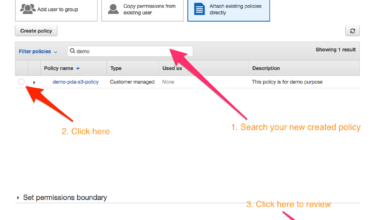
CloudPets Teddy Bears Leak Millions of Voice Recordings
CloudPets teddy bears leak millions of voice recordings to hackers – that’s the chilling reality that unfolded, exposing a massive security flaw in a seemingly innocent children’s toy. These cuddly companions, designed to record and share children’s messages, became unwitting participants in a massive data breach, leaving countless families vulnerable. This wasn’t just a tech glitch; it was a catastrophic failure of security that highlights the darker side of our increasingly connected world.
We’ll delve into the details of this breach, explore the vulnerabilities, and examine the lasting impact on affected users and the broader implications for the Internet of Things (IoT).
The CloudPets breach involved the exposure of millions of voice recordings, personal data, and potentially sensitive information shared between children and their loved ones. The timeline of events, from the initial discovery of the breach to the eventual public disclosure, is a cautionary tale of how quickly things can go wrong in the digital realm. We’ll look at the specific security flaws that allowed hackers such easy access, comparing CloudPets’ security measures (or lack thereof) to industry best practices.
The absence of robust data encryption is a key area of concern, highlighting a crucial lesson in data security for IoT devices.
The CloudPets Data Breach: Cloudpets Teddy Bears Leak Millions Of Voice Recordings To Hackers
CloudPets, a line of interactive teddy bears, offered parents a way to connect with their children remotely through voice recordings. These seemingly innocent toys, however, became the unwitting players in a massive data breach, highlighting the vulnerabilities of connected devices and the importance of robust data security practices. This breach serves as a stark reminder of the potential consequences of inadequate security measures in the Internet of Things (IoT) market.The CloudPets data breach exposed millions of voice recordings and personal information.
The bears themselves functioned by recording children’s messages and allowing parents to access these messages through a dedicated mobile app. The app facilitated two-way communication, creating a seemingly seamless connection between child and parent. However, the system’s security flaws allowed hackers to access a vast trove of sensitive data.
Data Compromised
The breach involved the compromise of approximately 820,000 user accounts. The stolen data included not only the voice recordings of children, but also personal information such as parents’ email addresses, passwords, and potentially other identifying details associated with the accounts. The sheer volume of data exposed, coupled with its sensitive nature, made this breach exceptionally significant. The lasting impact on the affected families, especially concerning the potential misuse of children’s voices, is a significant concern.
Timeline of Events
The breach itself occurred sometime before it was discovered in 2017. Researchers discovered the vulnerability in the CloudPets system, which lacked adequate security measures to protect user data. The unsecured database containing the sensitive information was publicly accessible. The discovery was reported to the company, and the information about the breach was later made public. Following the disclosure, the CloudPets servers were taken offline, but the damage had already been done.
The timeline underscores the critical need for proactive security measures and prompt responses to security vulnerabilities to mitigate potential harm. The lack of timely response and inadequate security measures allowed the hackers to access and exploit the vulnerability for an extended period.
Security Vulnberabilities in CloudPets

The CloudPets data breach, resulting in the exposure of millions of children’s voice recordings, highlighted a shocking lack of basic security measures. This wasn’t a sophisticated, targeted attack; rather, it was a consequence of fundamental flaws in the design and implementation of the CloudPets system. The vulnerability allowed relatively simple attacks to succeed, exposing a critical failure in protecting sensitive user data.The core problem stemmed from a combination of factors, each contributing to the overall security failure.
A lack of robust security protocols, coupled with insufficient data encryption, left the system wide open to exploitation. This wasn’t a case of a single, easily patched vulnerability, but rather a systemic weakness in the entire architecture.
Lack of Secure Authentication and Authorization
CloudPets lacked strong authentication mechanisms to verify the identity of users accessing the system. This meant that anyone who gained unauthorized access to the system could potentially access all the stored voice recordings without needing a password or any other form of authentication. Industry best practices dictate multi-factor authentication, strong password policies, and regular security audits to mitigate such risks.
CloudPets failed to implement any of these crucial safeguards. This vulnerability, combined with the lack of encryption, essentially turned the system into an open door for hackers.
Absence of Data Encryption at Rest and in Transit
Perhaps the most egregious oversight was the complete absence of data encryption. This means that the voice recordings were stored on the CloudPets servers in plain text, easily accessible to anyone who managed to breach the system’s security. Industry best practices strongly advocate for end-to-end encryption, meaning data is encrypted both while it’s stored (at rest) and while it’s being transmitted (in transit).
This ensures that even if a hacker gains access to the servers or intercepts data during transmission, the information remains unreadable without the decryption key. The absence of this fundamental security measure was a catastrophic error with devastating consequences.
Inadequate Server Security
The CloudPets servers themselves were apparently poorly secured. While the specifics of the breach haven’t been publicly released in full detail, it’s highly likely that the servers lacked basic security measures such as firewalls, intrusion detection systems, and regular security patching. These are standard security measures used by reputable companies to protect their systems from unauthorized access. The failure to implement these basic safeguards demonstrates a significant lack of commitment to data security.
The comparison to industry best practices reveals a stark contrast; reputable companies invest heavily in these measures, while CloudPets appears to have neglected them entirely.
Impact on Users and Privacy
The CloudPets data breach exposed millions of private voice recordings, creating significant risks for affected users. The sheer volume of sensitive data leaked—including children’s voices and family conversations—presents a range of potential harms, extending far beyond simple inconvenience. The long-term consequences for those involved could be severe and far-reaching.The compromised data included not only the recordings themselves but also potentially linked personally identifiable information (PII) such as usernames, email addresses, and even physical addresses depending on the account setup.
This combination of sensitive audio and identifying details creates a potent cocktail for malicious actors.
Types of Harm Experienced by Users
The leaked data presented several avenues for exploitation. Identity theft is a major concern, as the combination of voice recordings and PII could be used to impersonate users for financial gain or other nefarious purposes. Imagine a scammer using a child’s voice recording to manipulate a grandparent into divulging bank account details. Beyond financial fraud, users faced the risk of harassment, stalking, and even blackmail.
The intimate nature of many of the recordings – bedtime stories, family conversations – made users vulnerable to emotional distress and psychological harm.
Long-Term Consequences for Affected Users
The consequences of this breach extend far beyond the immediate aftermath. The long-term effects on victims could include damaged credit scores, difficulty obtaining loans or insurance, and significant emotional trauma. The persistent threat of future identity theft or harassment adds to the ongoing anxiety and uncertainty. For children whose voices were recorded, the long-term implications of having their private moments exposed could be particularly damaging, impacting their sense of security and privacy well into adulthood.
Consider, for example, the potential for these recordings to be used in future deepfakes or other forms of malicious manipulation.
Potential Risks and Mitigation Strategies, Cloudpets teddy bears leak millions of voice recordings to hackers
| Risk Type | Description | Likelihood | Mitigation Strategy |
|---|---|---|---|
| Identity Theft | Use of PII and voice recordings to impersonate users for financial gain or other fraudulent activities. | High | Monitor credit reports regularly; consider identity theft protection services; report any suspicious activity immediately. |
| Harassment and Stalking | Use of PII and recordings to locate and harass or stalk users. | Medium | Be vigilant about online privacy; report any instances of harassment or stalking to the appropriate authorities. |
| Emotional Distress | Exposure of private conversations and recordings leading to significant emotional trauma and anxiety. | High | Seek professional counseling or support groups if needed; practice self-care and stress management techniques. |
| Blackmail | Use of intimate recordings to extort money or other favors from users. | Low | Report any blackmail attempts to the authorities immediately; do not engage with blackmailers. |
The Role of Cloud Storage and Data Security
The CloudPets breach starkly highlighted the inherent risks associated with storing sensitive data, particularly children’s voices, in the cloud without robust security measures. While cloud storage offers scalability and cost-effectiveness, it also introduces vulnerabilities that can be exploited by malicious actors, leading to significant privacy violations and reputational damage for companies. Understanding and mitigating these risks is paramount for any organization handling personal information.The convenience of cloud storage shouldn’t overshadow the critical need for robust security protocols.
The CloudPets case serves as a cautionary tale, emphasizing that the security of data is not solely dependent on the cloud provider but also on the design and implementation of security measures within the device and its associated systems. A multi-layered approach is necessary to protect sensitive information.
Risks Associated with Storing Sensitive Data in the Cloud
Storing sensitive data in the cloud exposes organizations and individuals to a range of risks. These include data breaches resulting from unauthorized access, data loss due to outages or system failures, and vulnerabilities stemming from insecure configurations or weak security protocols. The CloudPets case exemplifies the devastating consequences of inadequate security, where millions of voice recordings were exposed due to easily exploitable vulnerabilities.
Further risks include insider threats, where employees with access to the data may misuse or leak it, and regulatory non-compliance, resulting in significant fines and legal repercussions. The potential for reputational damage and loss of customer trust is also substantial.
Comparison of Cloud Storage Security Protocols
Various cloud storage providers offer different security protocols, each with its strengths and weaknesses. Some providers utilize encryption both in transit (data traveling between the device and the cloud) and at rest (data stored on the cloud server), offering a higher level of protection. Multi-factor authentication, requiring multiple forms of verification for access, is another crucial security measure.
Regular security audits and penetration testing are also essential to identify and address vulnerabilities. However, even with robust protocols in place, the security of the data also relies heavily on the security practices implemented by the device manufacturer and the overall system architecture. For instance, a poorly designed IoT device might expose data even if the cloud storage itself is secure.
The lack of strong password protection and the absence of regular software updates were key factors contributing to the CloudPets breach.
Hypothetical Security Plan for a Similar IoT Device
A comprehensive security plan for a similar IoT device would involve multiple layers of protection. Firstly, end-to-end encryption should be implemented, encrypting data at the device level before it’s sent to the cloud, ensuring that even if the cloud storage is compromised, the data remains inaccessible. Strong password policies and multi-factor authentication would prevent unauthorized access. Regular software updates would address any vulnerabilities discovered after the device is released.
The CloudPets hack, exposing millions of children’s voice recordings, really highlights the critical need for robust data security in connected devices. Building secure apps requires careful consideration, and that’s where understanding the possibilities of domino app dev the low code and pro code future comes in; secure development practices are paramount, no matter the platform.
Ultimately, the CloudPets incident serves as a stark reminder of the potential consequences of neglecting security in the age of IoT.
Furthermore, a robust data loss prevention (DLP) system would monitor data movement and prevent sensitive information from leaving the system unauthorized. The security plan should also include rigorous security testing throughout the development lifecycle, including penetration testing and vulnerability assessments. Finally, a clear incident response plan should be in place to quickly contain and mitigate any security breaches that may occur.
This would involve procedures for identifying the breach, isolating affected systems, and notifying affected users. Transparency and accountability are key components of such a plan.
Legal and Ethical Implications
The CloudPets data breach raised serious questions about the legal and ethical responsibilities of companies handling sensitive user data, particularly in the burgeoning Internet of Things (IoT) market. The sheer volume of private information exposed – millions of voice recordings of children – highlighted the devastating consequences of inadequate security measures and the urgent need for stronger legal frameworks and ethical guidelines.The lack of robust security protocols in CloudPets’ system allowed hackers relatively easy access to a treasure trove of personal data.
This raises crucial questions about the company’s adherence to existing data protection laws and regulations, such as GDPR (in Europe) and CCPA (in California). While specific legal actions taken against CloudPets following the breach aren’t extensively documented in readily available public sources, the incident undoubtedly contributed to a growing awareness of the need for stricter accountability for companies handling sensitive data, particularly data pertaining to children.
The potential for class-action lawsuits against CloudPets, based on negligence and violation of privacy rights, is a clear consequence of their security failures.
Legal Actions and Accountability
The CloudPets breach, while not resulting in widely publicized lawsuits, served as a significant case study in the growing area of IoT security and data privacy litigation. While specific legal actions against the company may not have been highly visible in mainstream media, the event likely spurred internal investigations and potentially settlements with affected users or regulatory bodies. The lack of readily available information regarding specific legal outcomes emphasizes the need for greater transparency in data breach reporting and legal proceedings.
This lack of readily available information underscores the need for more stringent reporting requirements and clearer legal frameworks to hold companies accountable for data breaches. The case serves as a cautionary tale for other IoT companies, highlighting the potential for significant legal and financial repercussions stemming from data security failures.
Ethical Responsibilities of Companies
The CloudPets incident serves as a stark reminder of the ethical responsibilities companies have towards their users. Beyond complying with existing laws and regulations, organizations have a moral obligation to prioritize user data security. This includes investing in robust security measures, implementing comprehensive data protection policies, and regularly auditing their systems for vulnerabilities. Transparency is also crucial; companies should proactively inform users about potential security risks and data breaches, providing clear and concise information about the steps they are taking to mitigate the harm.
The ethical failure in the CloudPets case was not just the lack of security, but also the lack of transparency and accountability following the breach. The company’s silence, or at least the limited public information available, only amplified the negative impact on user trust.
Impact on Consumer Trust
The CloudPets breach significantly eroded consumer trust in IoT devices and cloud services. The vulnerability of seemingly innocuous devices, designed for children, exposed the widespread risk associated with connecting devices to the internet. This breach fostered a heightened awareness among consumers about the potential for data breaches and the importance of choosing reputable companies with strong security practices. The incident highlighted the vulnerability of children’s data, raising concerns about the potential for misuse and exploitation.
This eroded trust not only in CloudPets but also in the broader IoT industry, leading many consumers to reconsider the use of connected devices, especially those collecting sensitive personal information. The long-term impact includes increased consumer scrutiny of privacy policies and a demand for greater transparency and accountability from IoT manufacturers and cloud service providers.
Lessons Learned and Future Prevention
The CloudPets breach serves as a stark reminder of the vulnerabilities inherent in connected toys and the critical need for robust security measures. The sheer volume of private data exposed – millions of voice recordings of children – highlights the devastating consequences of neglecting data security in IoT devices. This incident underscores the importance of proactive security planning and implementation from the initial design phase, rather than as an afterthought.The lack of basic security protocols in CloudPets, such as strong encryption and regular security audits, allowed hackers relatively easy access to sensitive data.
This highlights a broader issue within the IoT industry: a tendency to prioritize functionality and speed to market over comprehensive security. This approach is fundamentally flawed and ultimately puts users at significant risk. The financial and reputational damage suffered by CloudPets serves as a cautionary tale for other companies developing similar products.
Strengthening Security in Connected Toys
Companies developing connected toys and similar IoT devices must prioritize data security throughout the entire product lifecycle. This includes rigorous security testing during development, robust encryption of data both in transit and at rest, and regular security audits to identify and address vulnerabilities. Furthermore, a comprehensive incident response plan should be in place to mitigate the impact of any potential breaches.
This plan should include procedures for notifying affected users and cooperating with law enforcement agencies. Regular software updates are also crucial to address newly discovered vulnerabilities. Failing to implement these measures can lead to significant legal and financial repercussions, as well as irreparable damage to the company’s reputation.
Best Practices for Securing Data in IoT Devices
The following best practices should be implemented to ensure the security of data in IoT devices:
- Implement strong encryption: All data transmitted to and from the device, as well as data stored on the device itself, should be encrypted using industry-standard algorithms. This prevents unauthorized access even if the device or server is compromised.
- Regular security audits and penetration testing: Independent security audits and penetration testing should be conducted regularly to identify and address vulnerabilities before they can be exploited by malicious actors. This proactive approach is far more effective and cost-efficient than reacting to a breach after it has occurred.
- Secure data storage and access control: Data should be stored securely, ideally using a cloud storage provider with robust security measures. Access to the data should be strictly controlled and limited to authorized personnel only, using strong authentication mechanisms.
- Secure software development lifecycle: Secure coding practices should be followed throughout the software development lifecycle, including regular code reviews and security testing. This helps to prevent vulnerabilities from being introduced into the code in the first place.
- Regular software updates: Regular software updates are crucial to address newly discovered vulnerabilities and security flaws. Devices should be designed to automatically download and install updates whenever they are available.
- Privacy by design: Privacy considerations should be integrated into the design and development of the device from the outset. This involves minimizing the amount of data collected, ensuring data is collected only for legitimate purposes, and providing users with clear and concise information about how their data is being used.
- Robust authentication and authorization mechanisms: Strong passwords or multi-factor authentication should be used to protect user accounts and prevent unauthorized access. Access control mechanisms should be implemented to limit access to sensitive data based on user roles and permissions.
Illustrative Example

The CloudPets breach wasn’t just a data leak; it was a theft of intimacy, a violation of childhood innocence. Imagine the potential for misuse of these recordings, the chilling possibilities that lurk in the digital shadows. This hypothetical scenario explores just one of the many ways this stolen data could be weaponized.Lily, a seven-year-old girl, loved her CloudPets bear.
Every night, she would whisper secrets and bedtime stories into its soft fur, unaware that these precious moments were being recorded and stored insecurely. Months after the breach, a malicious actor gained access to the database and identified Lily’s recordings. They began to use snippets of Lily’s innocent ramblings, weaving them into disturbing online content, designed to manipulate and exploit her.
The Creation and Dissemination of Manipulated Recordings
The hacker, skilled in audio manipulation, subtly altered Lily’s voice recordings. They spliced together phrases from her bedtime stories, creating a seemingly innocent lullaby that, upon closer inspection, contained hidden, subliminal messages. This manipulated audio was then shared on obscure online forums, attracting individuals with predatory intentions. The hacker also used portions of Lily’s recordings to create fake profiles on social media platforms, making it appear as though Lily herself was soliciting interactions.
The CloudPets teddy bear data breach, exposing millions of voice recordings to hackers, highlights a terrifying vulnerability in connected devices. This incident underscores the urgent need for robust cloud security, which is why understanding solutions like bitglass and the rise of cloud security posture management is crucial. Ultimately, the CloudPets case serves as a stark reminder of the potential consequences of inadequate cloud security practices.
This was a sophisticated form of online grooming, using the child’s own voice to lure potential abusers.
Emotional and Psychological Impact on Lily and Her Family
The discovery of the manipulated recordings sent shockwaves through Lily’s family. The violation of her privacy was profound, shattering their sense of security. Lily, initially oblivious to the gravity of the situation, began to exhibit signs of anxiety and sleep disturbances. Nightmares replaced her once-peaceful bedtime routine. Her parents struggled to understand the extent of the damage, grappling with the fear that their daughter had been exposed to unseen dangers and the potential long-term psychological consequences.
The family’s trust in technology was irrevocably damaged, leaving them feeling vulnerable and exposed. Their once-simple life was now consumed by anxieties about online safety and the potential for further harm. The emotional toll on the entire family was immense, requiring extensive therapy and support to navigate the trauma.
Final Summary
The CloudPets data breach serves as a stark reminder of the critical importance of robust data security in an increasingly connected world. The vulnerability of seemingly innocuous devices like children’s toys underscores the need for manufacturers to prioritize security from the design phase onward. The lasting impact on consumer trust, the potential for identity theft and emotional harm, and the legal ramifications all highlight the far-reaching consequences of neglecting data security.
This isn’t just about technology; it’s about safeguarding the privacy and well-being of individuals, particularly vulnerable children. The lessons learned from this breach should guide future development and implementation of IoT devices, ensuring a safer and more secure digital landscape for everyone.
Question Bank
What type of data was compromised in the CloudPets breach?
Millions of voice recordings of children, along with user accounts containing personal information, were leaked.
Were any legal actions taken after the breach?
While specifics vary, lawsuits were likely filed against CloudPets, and investigations into the breach probably occurred.
How can parents protect their children’s data from similar breaches?
Be cautious about connected toys and thoroughly research a product’s security measures before purchase. Look for strong encryption and reputable security practices.
What is the long-term impact on children whose voice recordings were leaked?
Potential long-term impacts could include psychological distress, identity theft, and future privacy concerns as they grow older.





